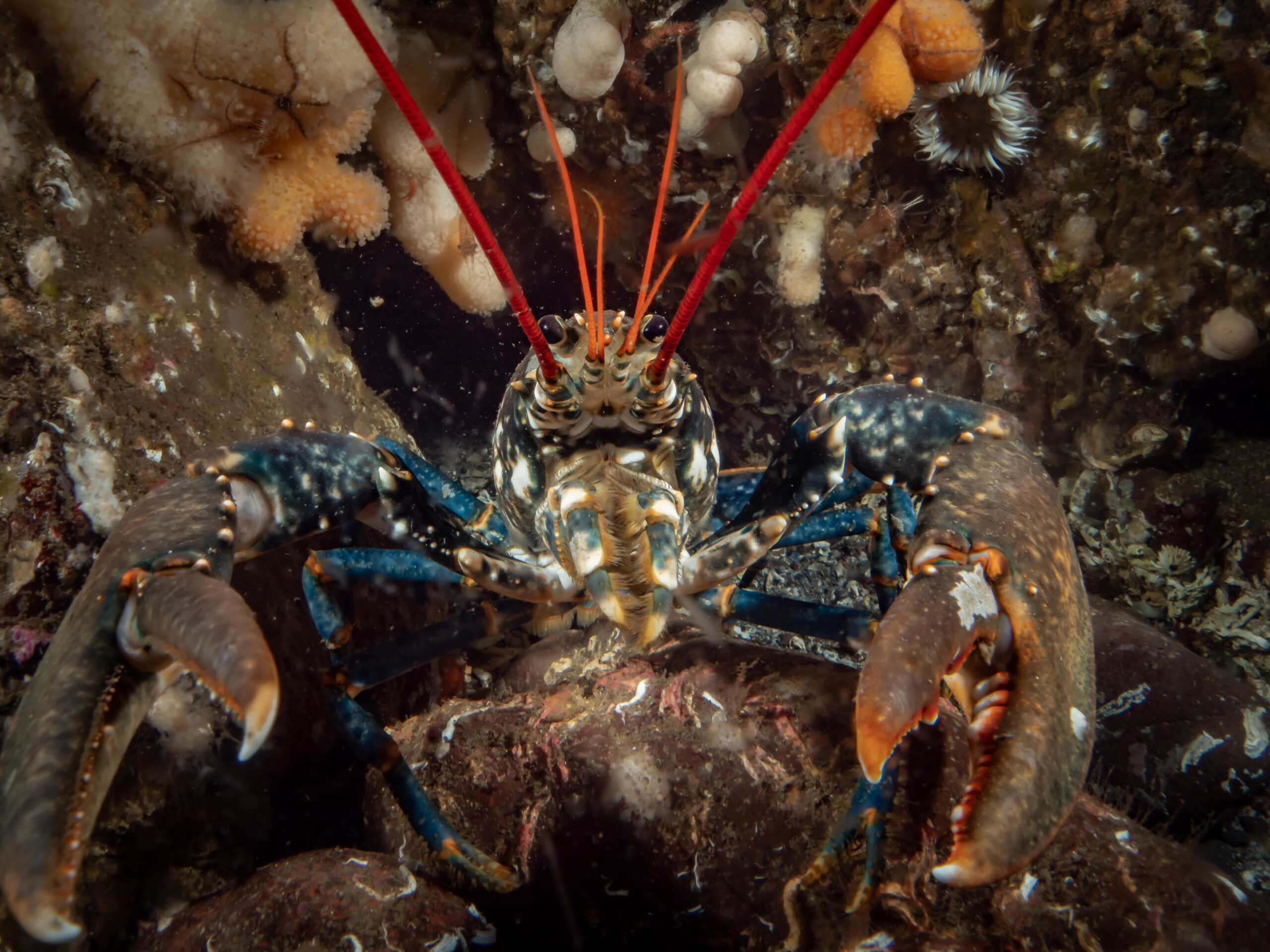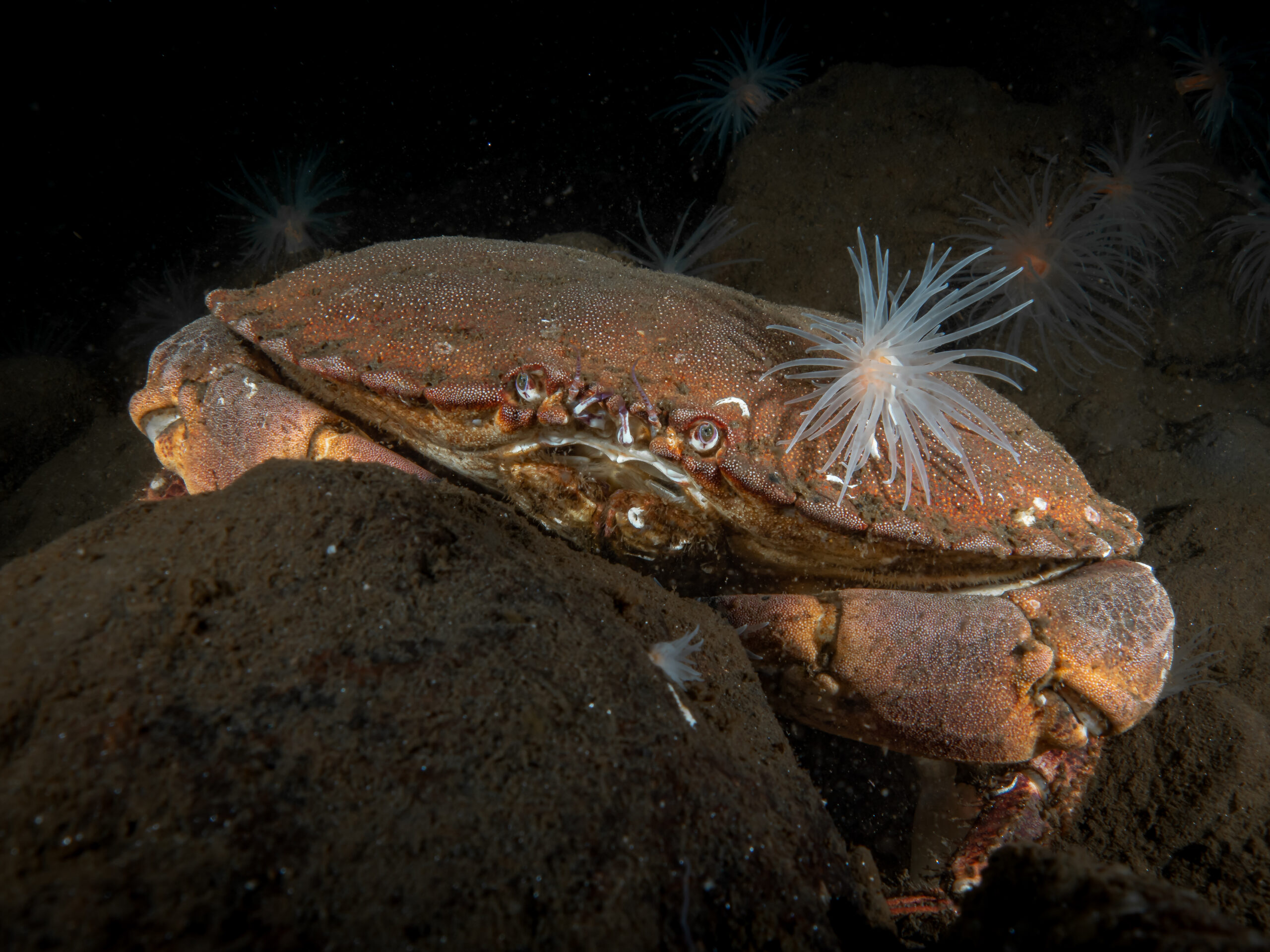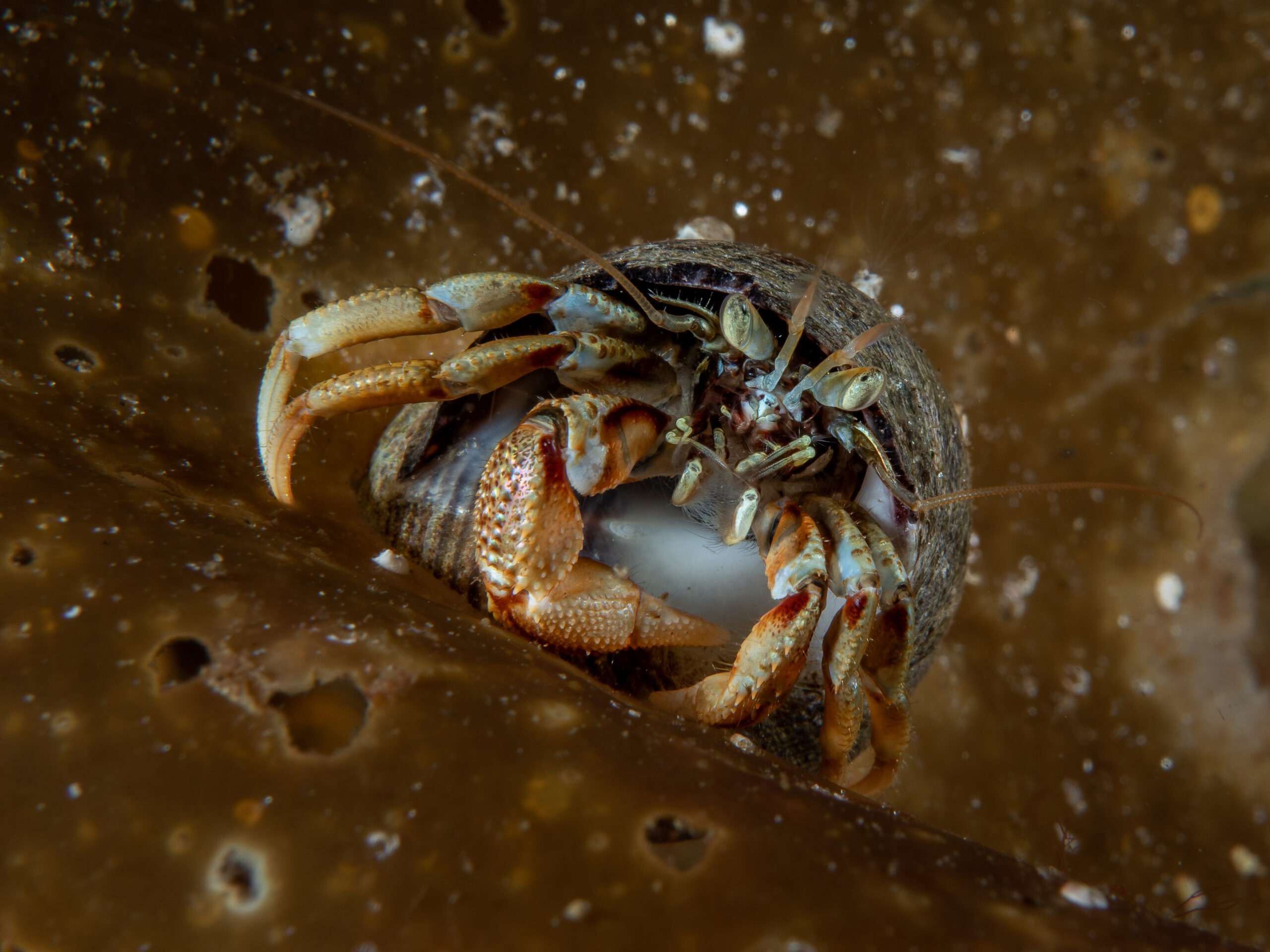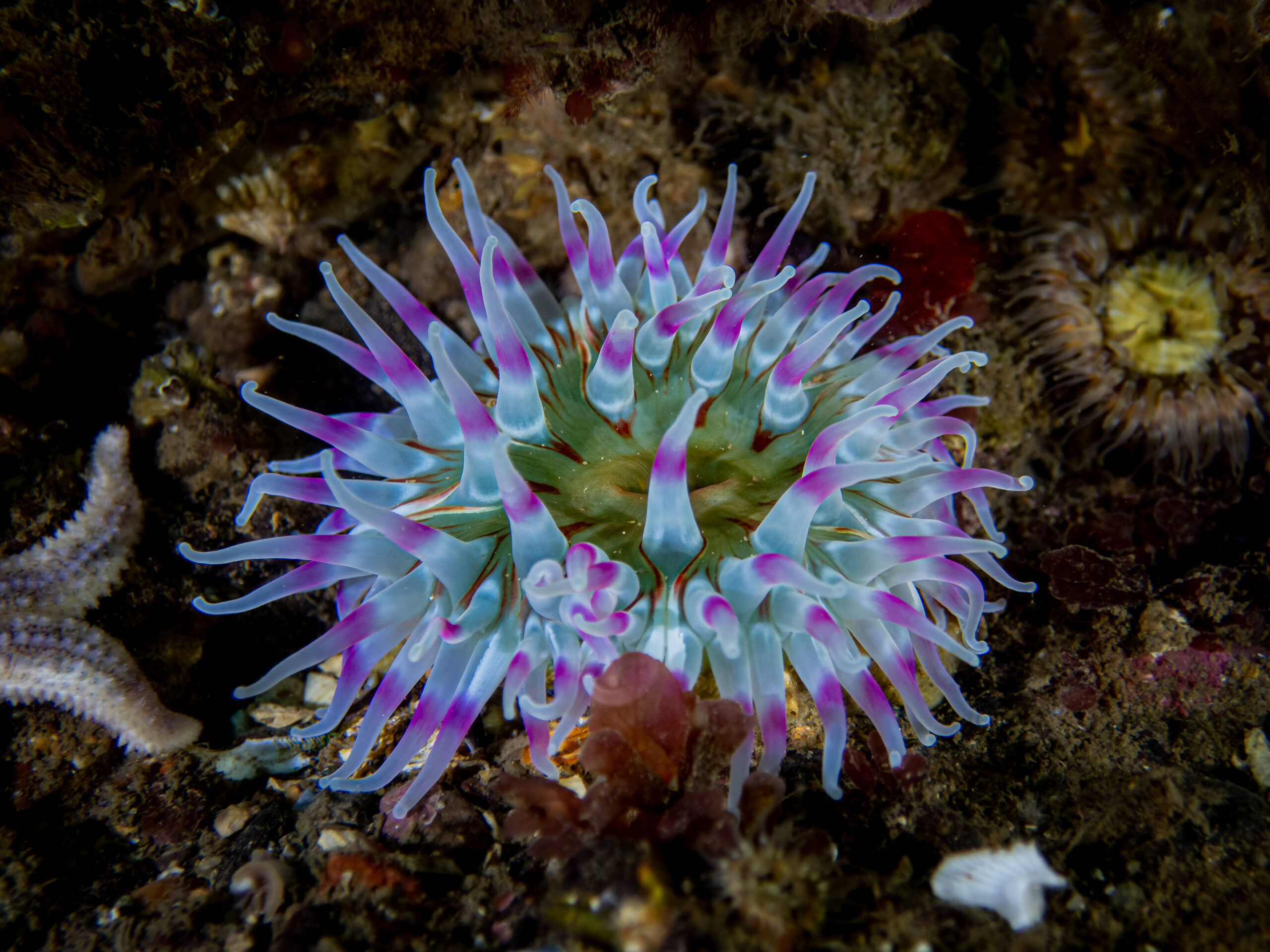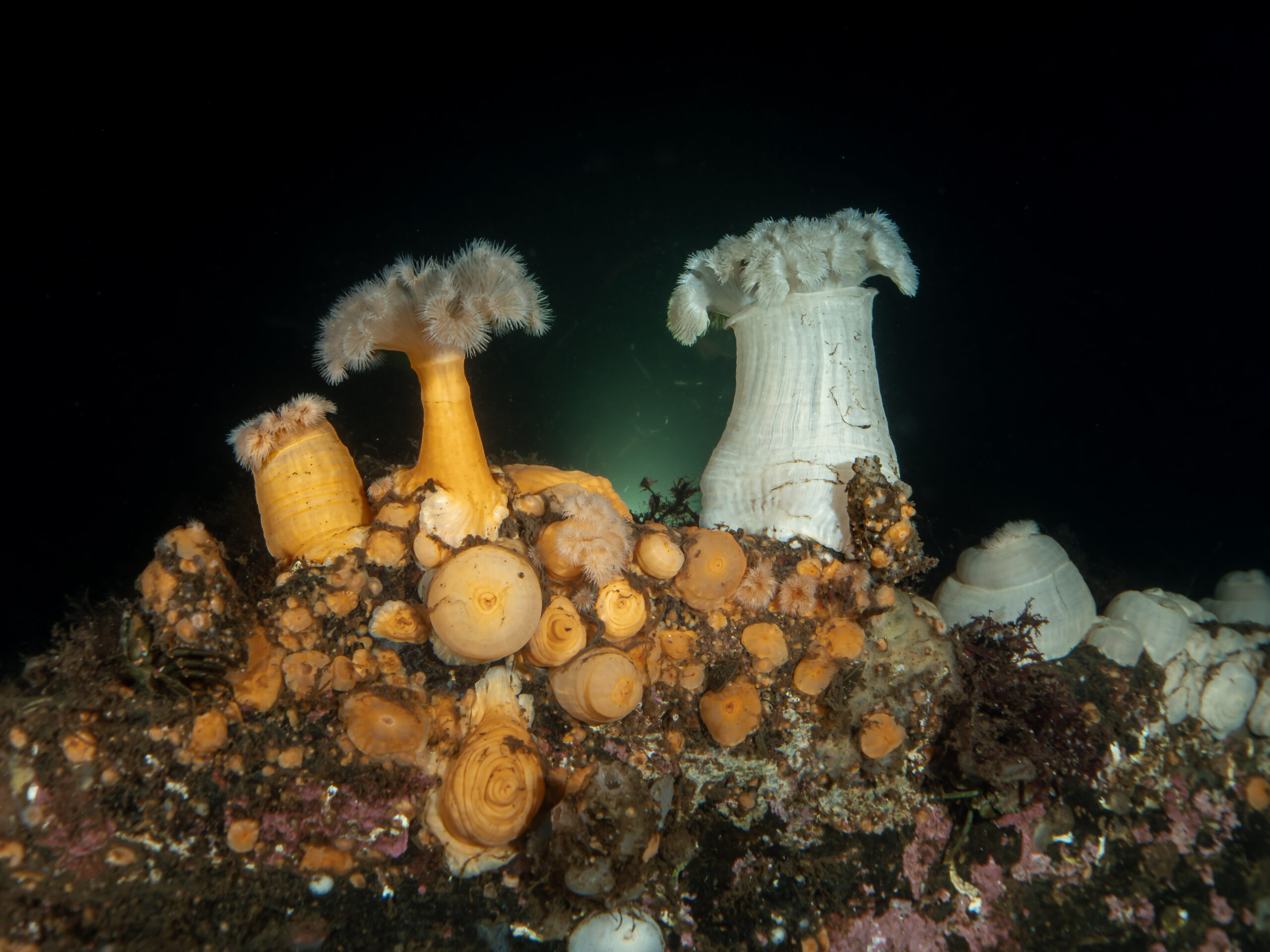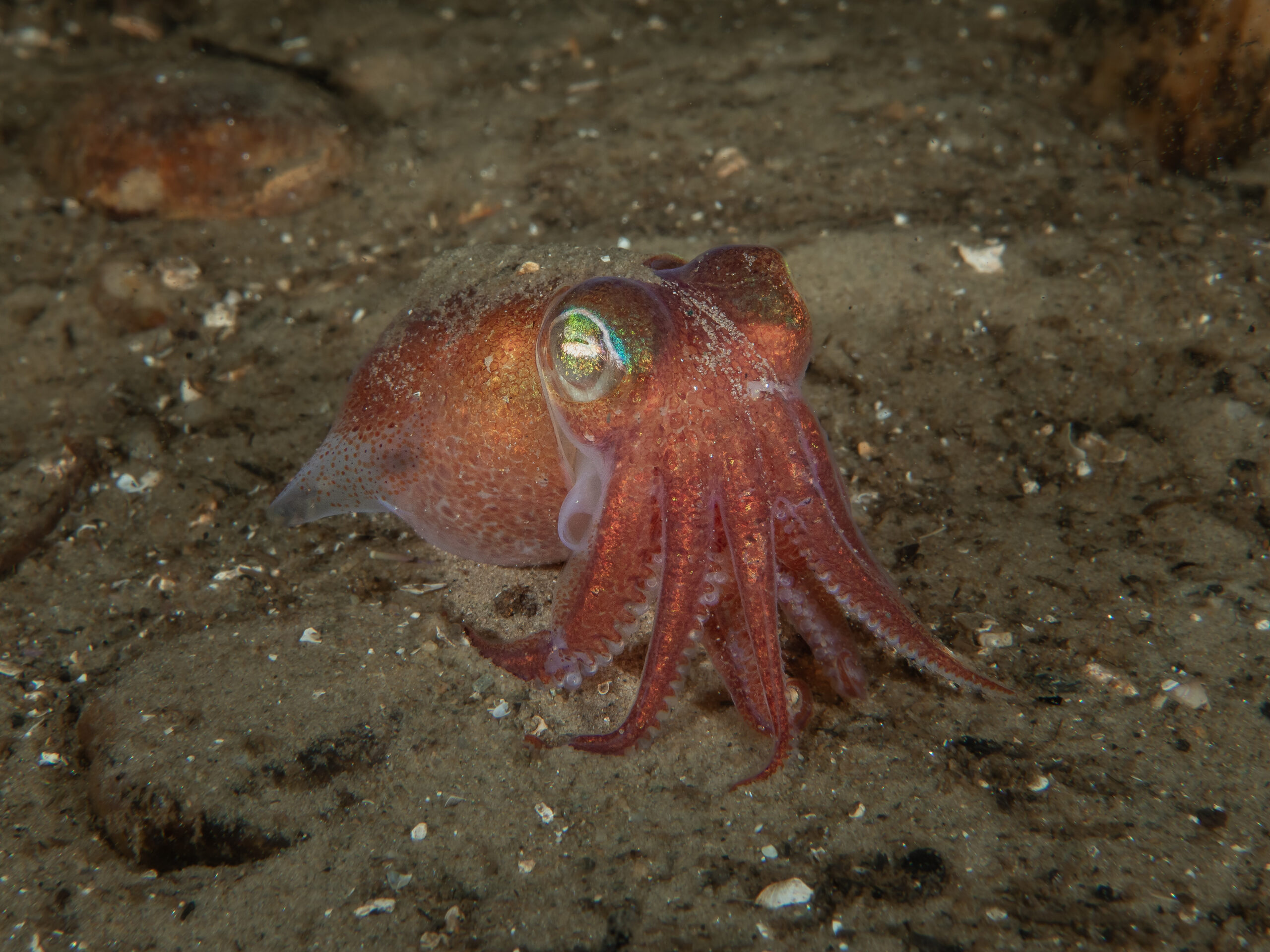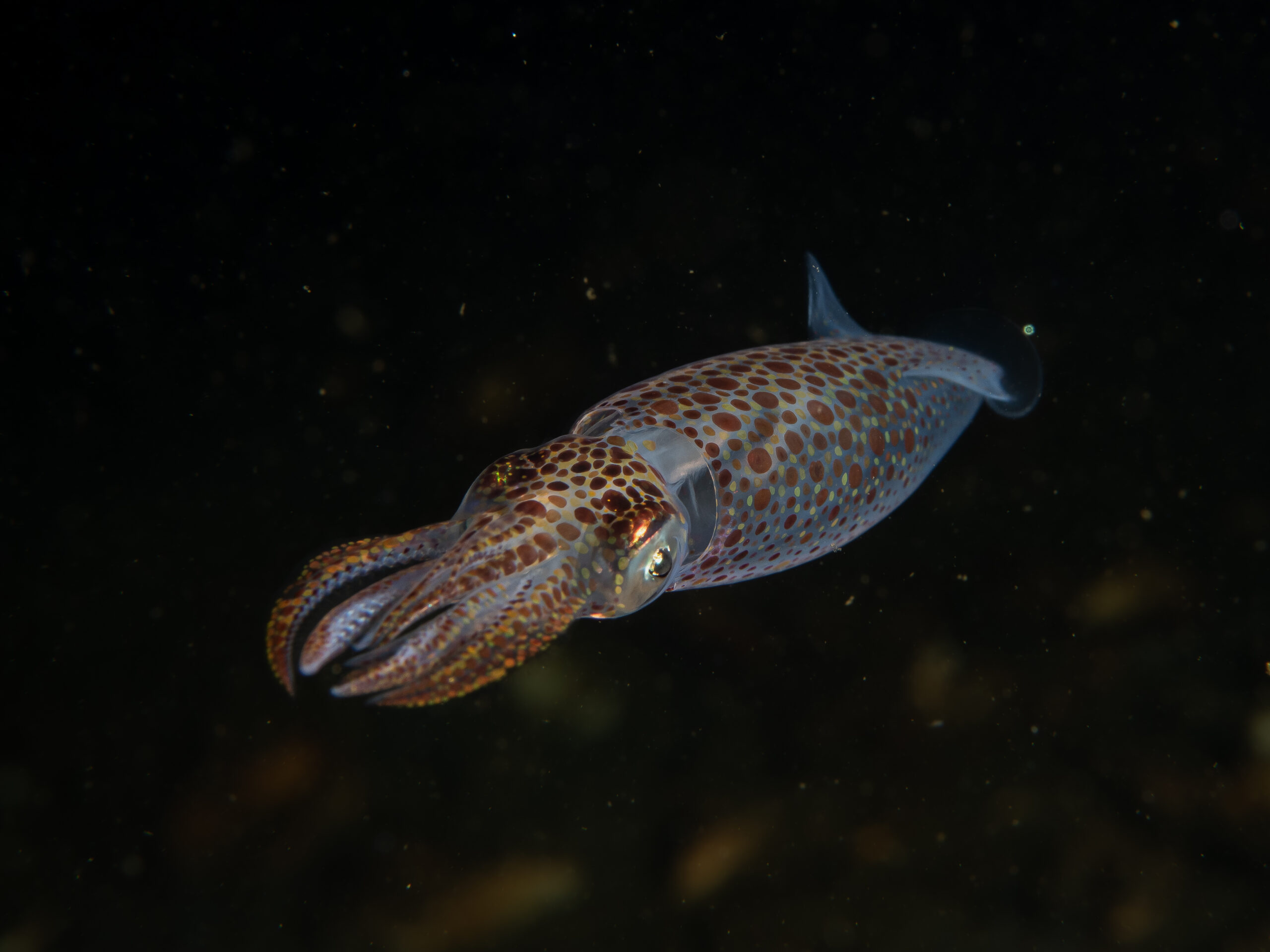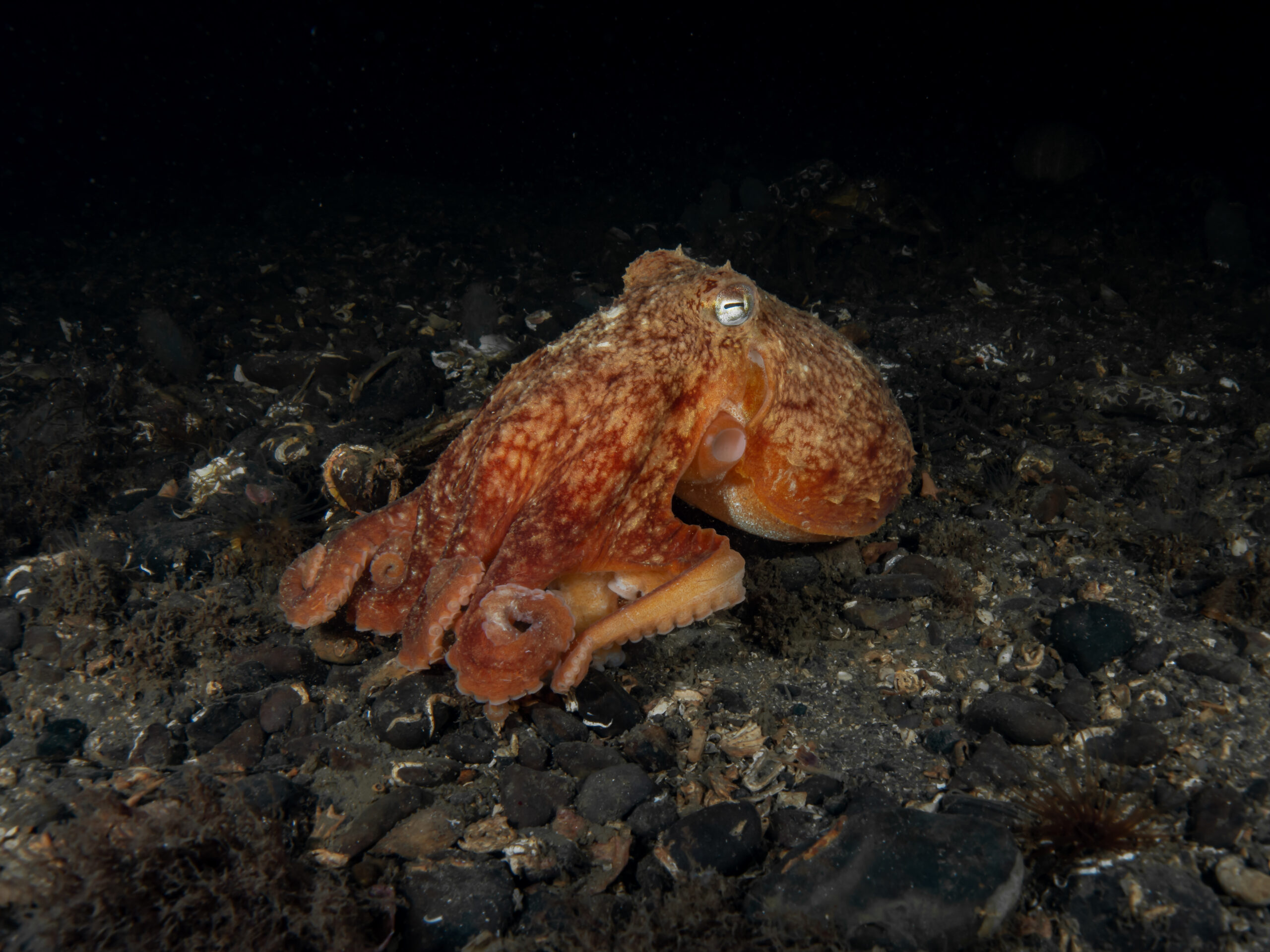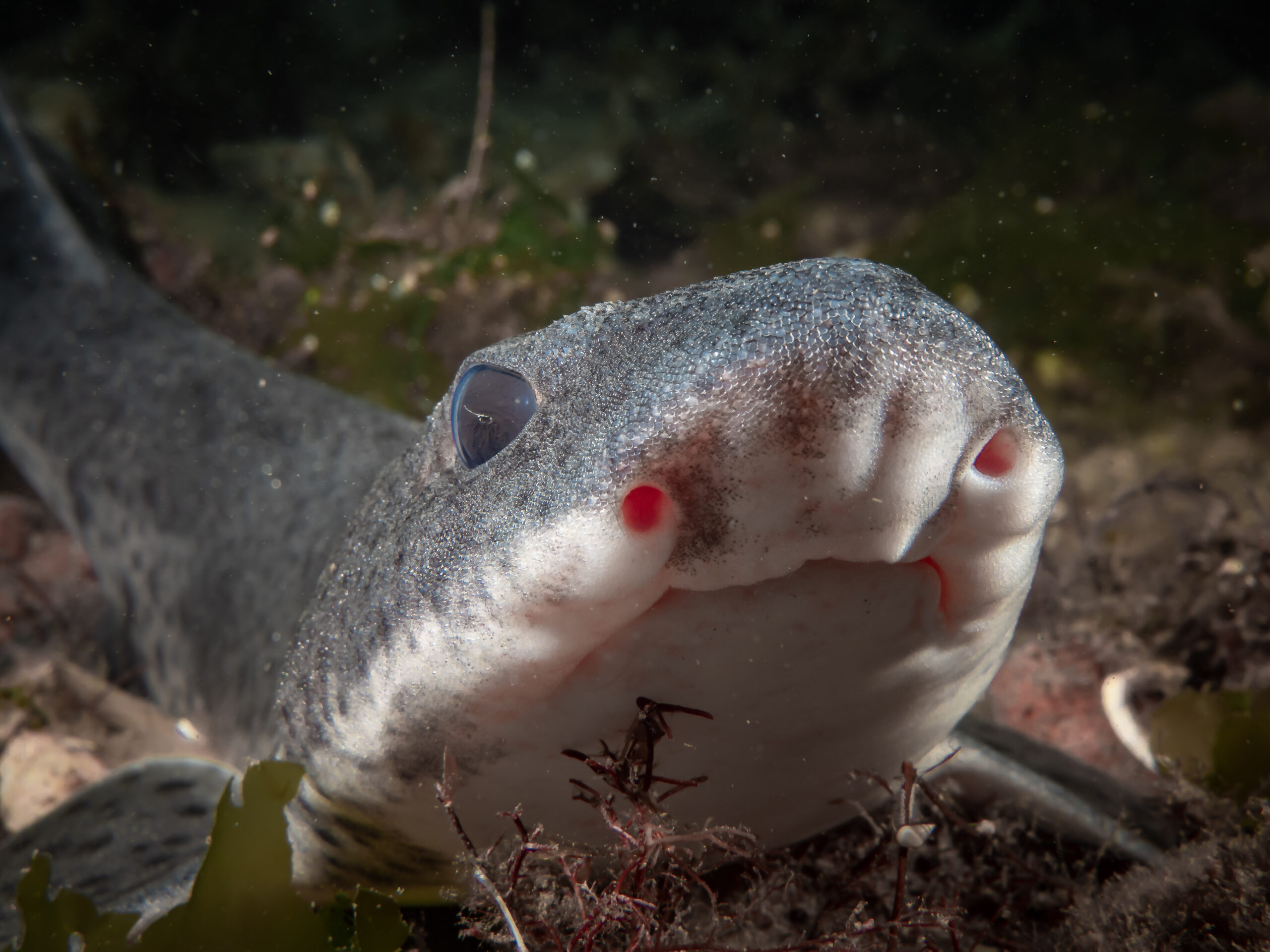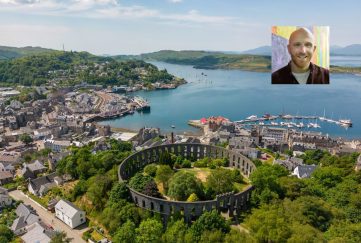Scotland’s Secret Underwater World
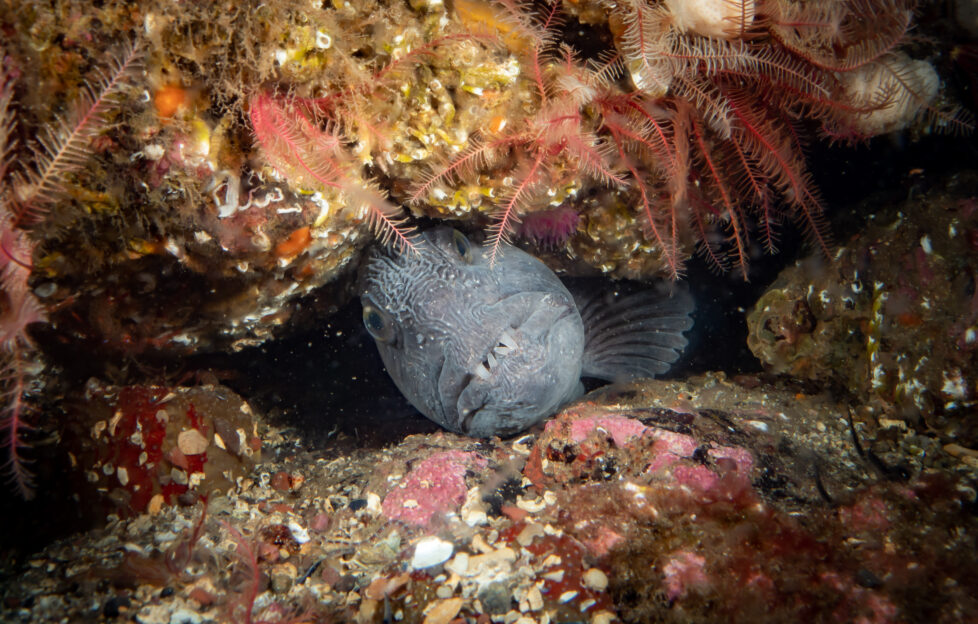
We chat to Ross McLaren, an underwater photographer who is capturing amazing images of Scotland’s marine life. From bobtail squid to nudibranchs, there’s so much to discover…
How did you get into underwater photography?
I went from one very expensive interest, scuba diving, to another very expensive interest, photography. The photography part arose from my sheer amazement of discovering stuff on dives that I never knew existed here. I’m not an expert, or a marine biologist – I just gave diving a try one time, fell in love with it and wanted to share what I found.
When you look at the surface, you think it’s just grey and boring. But once I got my head under, I genuinely couldn’t believe the colours.
Everyone hits a certain age in their twenties and they suddenly want to go hillwalking, so there’s plenty of landscape photography. But what lies beneath our waterline is just as rugged, just as vibrant, and just as magical as the rest of Scotland. It’s incredible.
- Lobster
- Edible Crab
- Hermit Crab
Why Scotland?
Blue planet was an amazing show, but very rarely is anything ever done about the British Isles – particularly Scotland. There’s so much here that not enough people know about.
I always thought I’d love to go abroad somewhere nice and warm like Maldives, and it would be amazing to see turtles and rays. However, what I enjoy about Scotland is that I’m always surprised by what I find… because I didn’t know it was there to begin with. Even the most dived sites can throw up something unknown, for me.
We don’t have a lot of hard corals like you see in documentaries about the Great Barrier Reef, but we have some soft coral and a lot of anemones, sea squirts and such. They’re colourful – lots of oranges, creamy whites, pinks, reds.
Also, if you can dive in Scotland you can pretty much dive anywhere in the world because the conditions, the visibility and the temp here don’t make it easy.
- Dahlia Anemone
- Plumose Anemone
What’s your most interesting find, so far?
The bobtail squid. They’re so cool and usually nocturnal. They’re small and burrow themselves into the seabed.
Jellyfish are also one of my favourite things to photograph! We get a lot of those massive barrel jellyfish here. Open water swimmers obviously hate them, but to see them in action under the water, they are some of the most incredible creatures. The way they move – they’re totally out of this world.
In a way, you are in a whole other world. We’re not designed to be there, so to see these alien creatures is a real privilege. Sometimes the photos don’t do them justice.
…what lies beneath our waterline is just as rugged, just as vibrant, and just as magical as the rest of Scotland.
- Bobtail Squid
- Small Squid
How deep do you have to go to find marine life?
Anywhere between two metres down to about 20-25 metres is where you’re going to find majority of marine life. In Scotland, the visibility is pretty poor and sometimes there’s a lot of particles in the water, so it might only be five metres and with really powerful torches.
You also have to be pretty close to the subject if you want to photograph it. For macro photography, one metre or maybe two metres max of distance. Often closer for much smaller things like nudibranchs, which can be as small as 10mm in length.
If you get it at the right angle or the right moment, even the most boring animal can have a wee personality and produce a nice photo.
What equipment do you need to photograph underwater?
This is where you have to really invest yourself.
The real money isn’t necessarily the camera, it’s the housing for the camera. This generally costs a lot more than the camera itself. The camera can be about £400 and the housing roughly £1,000. That’s on the cheapest end, as well. Plus the lighting, which is essential – two large, powerful flashes and a video light for searching and getting the camera to focus.
You can still get great footage with a GoPro or small compact camera if you’re just starting out.
It’s all about perspective. Instead of taking a picture from above and getting full animal in frame, get down to its level. This gives the animals a sense of character. If you get it at the right angle or the right moment, even the most boring animal can have a wee personality and produce a nice photo.
- Nudibranch
- Octopus
- Dogfish
Your favourite spot to go diving in Scotland?
Portencross Pier is one of the most photographed piers in Scotland, but under the water it’s just as incredible. On a nice day you get a lot of ambient sunlight coming down, which adds another dimension.
Some of the best dives I’ve ever done were around the pier legs. You only have to dive around four or five metres and it’s absolutely covered with life. You really don’t have to go that deep if you’re looking for the squishy stuff that latches onto things, so you could even snorkel.

Sea Loch Anemone
Has this sparked an interest in conservation and a desire to maintain our coastlines?
There’s a cheesy phrase that comes to mind, “take only photographs and leave only bubbles.”
The papers picked up a photograph of mine recently, which was an Irn Bru can sitting on the seabed with a couple of sea anemones living on it. I looked back through more of my photos and realised there’s actually quite a lot of litter.
It poses a bit of an ethical conundrum for divers as often the animals have claimed the rubbish as their home, so we can’t remove it without disturbing them. It might make a shocking photo or a topical piece, but it really shouldn’t be there in the first place.
One of my most startling experiences was during a dive in an area of really poor visibility. On our way back to the surface, I saw what I thought was a jellyfish coming towards me. I thought that’ll make a nice video, so set up the camera and turned the light on.
As it came towards me, it turned around and right across it read, “I’m back.” It was actually a Tesco bag for life.
You see these stories about marine life washing ashore with stomachs full of plastic – this is why. I was looking at this, fully believing it was a jellyfish, so you can understand why marine life is eating it.
It really brought it home to me just how much damage we’re doing.
If you don’t see these things and experience them first-hand, you don’t know about it. Out of sight; out of mind. There’s so much going on at the moment that understandably protecting the oceans can be low in our list of priorities. But I realised it may not even be on some people’s lists, at all.
So I’ve decide to show the good and the bad side to try and raise some awareness.

Discover more about Scotland every month in The Scots Magazine. Subscribe today >>
Follow underwater photographer, Ross McLaren, over on Instagram (CLICK HERE)


